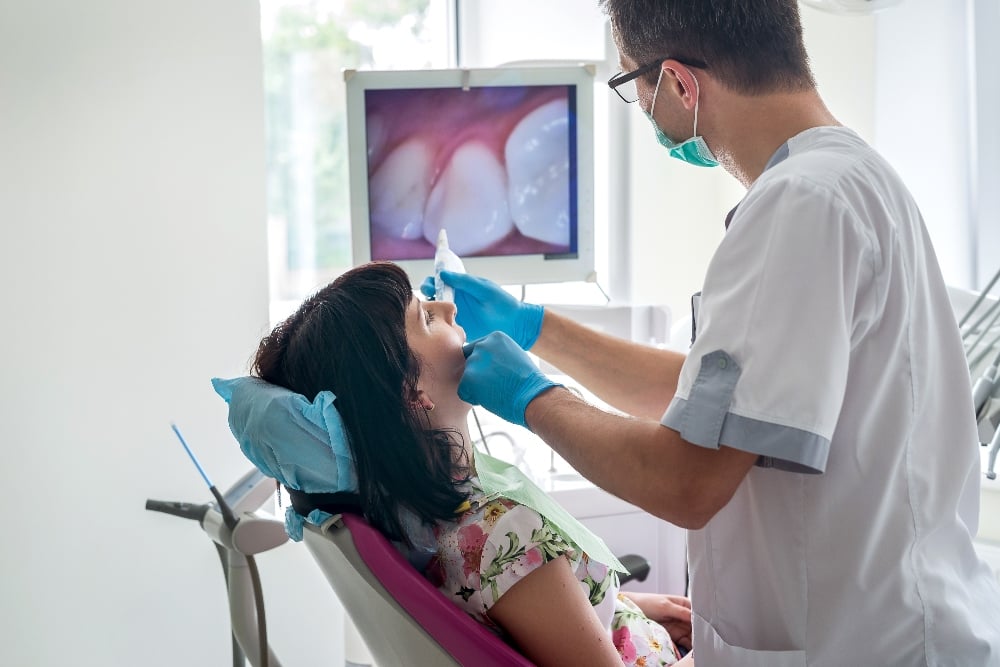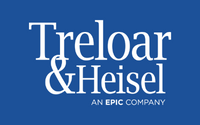Posted by Amy Carbone on Jul 23, 2019 9:30:00 AM
Are you looking to improve the efficiency of your dental practice, eliminate the potential for errors at different points in your workflow, or offer your patients better care overall? Technology has helped to make all of this easier and the dental industry is utilizing it to keep pace with the needs of today's consumers.
Here's how you can try to get the most from technology in your dental practice.

How Tech Is Growing in the Dental Industry
Technology in the dental field has grown exponentially in recent years. Many different types of hardware and software are being used to digitize diagnostics, procedures, and treatments, often making dental practices across the United States more efficient, more lucrative, and better at providing comprehensive dental care for patients. Paper charts are also being traded for digital ones and x-ray films seem to be a thing of the past.
Up-to-date tech can help your dental practice stay relevant and compete against other practitioners in your area. Dentists in nearly every subspecialty can benefit from the utilization of new technology, whether it be routine dentistry or more complicated restorative dental work.
How to Employ New Technologies in Your Dental Practice
There are several ways you can integrate and utilize new technology in your dental practice:
1. Go Paperless
If your office hasn't gone paperless yet, now is a great time to do it. Physical charts and printed papers take up space, are cumbersome, and can often be unorganized. Digital records, on the other hand, can save time and eliminate the hassle of paper charting. Kent W. Stapley, DMD, suggests to Dental Economics a few ways that dental practices can begin using digital technology: electronic prescriptions, digital x-rays, and digital documents capture for patient identification, insurance cards, and more.

2. Envision Intraoral Scanning
Intraoral scanning is the most up-to-date way of capturing dental impressions. Instead of creating a physical mold of the patient's mouth and dental structures to use for restorations and other procedures, the dentist uses an intraoral scanner that captures a digital impression. A 2017 review published in BMC Oral Health suggests that intraoral scanning reduces patient discomfort, allows for better communication between patients and their dental technician, simplifies clinical procedures for the dentist, and is more time-efficient than other alternatives.
3. Use CAD/CAM Technology
CAD/CAM technology (also known as computer-aided design and computer-aided manufacturing) is growing in the field of dentistry, particularly in the area of dental restorations and prosthodontics. It allows for complete customization of prosthetics, using exact imaging created by intraoral scanners. Texas A&M University's College of Dentistry says CAD/CAM technology "allows for more precise treatment planning and prosthetic design as well as a reduction in laboratory time."
4. Embrace 3D Printing
3D printing is growing in popularity, especially as small-scale 3D printers become more available and affordable. In dentistry, 3D printing is, in part, what makes intraoral scanning and CAD/CAM technology so revolutionary. Dentists can scan a patient's mouth, rendering a digital model of the patient's mouth. Then, they can use CAD/CAM technology to design a completely custom restorative piece, printed with a 3D printer.
In essence, 3D printing can potentially be used with intraoral scanning and CAD/CAM technology to create same-day restorations that are completed during a single appointment.
5. Look at Artificial Intelligence (AI)
Artificial intelligence for business is expanding at a rapid rate and the dental industry is beginning to use AI in several applications. Healthcare in America describes one surprisingly simple yet ingenious application– the use of AI to detect caries in bitewing radiographs. The use of AI to aid in the identification of cavities in potentially hundreds of radiographs a day can help to eliminate errors in detection while also being used as a tool for patient education. Ultimately, this increases the rate of treatment acceptance.
Keeping Up with the Dr. Joneses
Dentists with established practices may feel a bit like they're trying to keep up with the Dr. Joneses by implementing new technology into their practices. Learning curves can sometimes be challenging, but the payoff is high.
Integrate one new technology at a time and ensure your staff members are trained in how to use it before adding the next. Choose technologies that fit your practice and are designed to make the jobs of you and your staff easier.
About Treloar & Heisel
Treloar & Heisel is a premier financial services provider to dental and medical professionals across the country. We assist thousands of clients from residency to practice and through retirement with a comprehensive suite of financial services, custom-tailored advice, and a strong national network focused on delivering the highest level of service.
Treloar & Heisel and Treloar & Heisel Risk Management are divisions of Treloar & Heisel, LLC.
Insurance products are offered through Treloar & Heisel, LLC.
Treloar & Heisel, LLC. and its divisions do not offer information technology advice. Please consult a professional concerning this topic.


